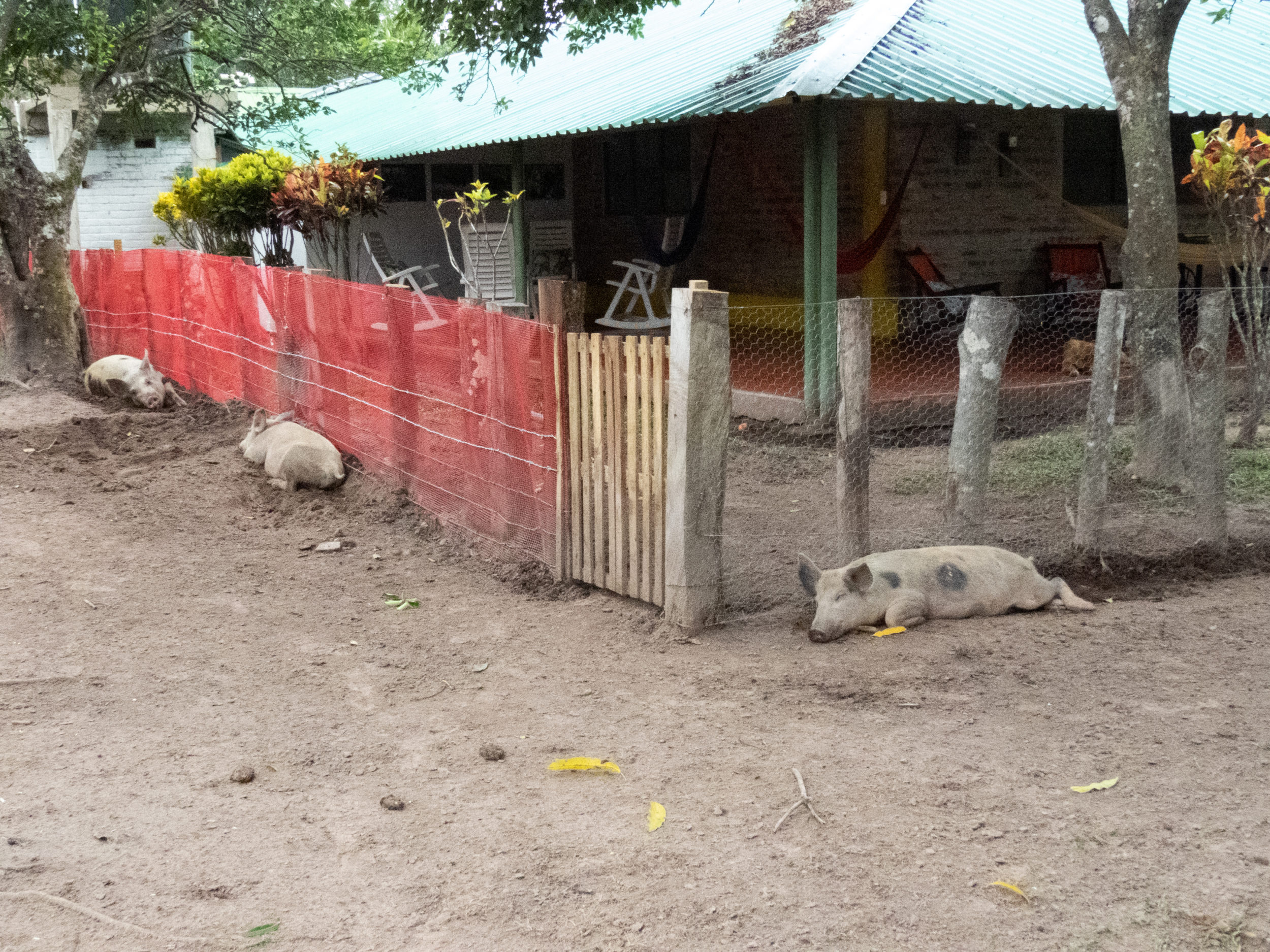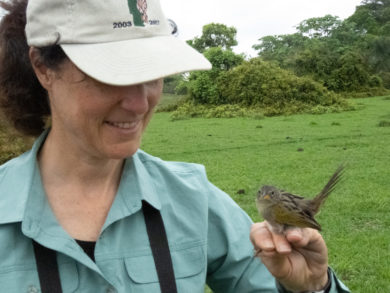For three weeks, members of VCE partner Asociación Calidris showed me the ways (and the birds) of the Llanos grasslands in eastern Colombia. For generations, ranchlands have been shaping the landscape. The well-being of many migratory and resident bird species will depend on the conservation partnerships Calidris is building. Funding for my trip and much of the work with Colombian ranchers described in these blogs is provided by the Bobolink Foundation.
This is the final post of a three-part series about this incredible shared learning experience. – Roz Renfrew
The Mango Pig Race
In the Colombian Llanos grasslands, pigs don’t fly, but mangoes do. The grapefruit-sized cannonballs plummet without warning from massive 80-year-old trees that grace ranch homesteads, hitting the ground with intense force and a startling clamor. But that’s not the best part.
Finely attuned in true Pavlovian form, the sound of mangoes falling through branches instantly sends all of the ranch’s pigs into a heated chase. It’s a first-come, first-served, highly competitive race with abundant snorts and a sweet reward for the winner. At the Hato Altamira ranch in San Luis de Pelenque, the pig mango race provides a diversion this time of year, when temperatures climb into the high 90’s and the rainy season is just getting underway.
Entertaining in their own right are the migratory birds passing through these vast, privately-owned grasslands, en route to northern breeding grounds. Blackpoll Warblers and American Redstarts are among the visitors that take advantage of patches of young forest, and Solitary Sandpipers can be found feeding along the shores of mudflats and ponds.
When it comes to grassland bird species that nest here, we know close to nothing. Some species may even be austral migrants that breed south of Colombia. VCE partner Asociaciόn Calidris is gathering basic information about these birds, such as their habitat preferences and time of year that they breed. Although bird identification guides for Colombia can be large enough to bench press, very little is known about the phenology, behavior, diet, and preferred vegetation structure of these resident grassland bird species. In order to promote and support ranchland management practices that will benefit birds, Calidris must have this information to help form recommendations.
We dodged the intense 98°F heat by mist-netting birds early in the morning—when it didn’t rain, and when our truck didn’t get stuck on dirt roads that turned greasy with rain. We looked for physical evidence of birds in reproductive stages, and recorded basic measurements like wing length and body mass, which as far as we know has not been done, except perhaps measurements from museum specimens.
We captured six species, and found evidence of breeding condition for three of them. A Wedge-tailed Grass-finch with a fading brood patch indicated it had been incubating eggs within the past couple of weeks. A female of the only grassland hummingbird specialist, the White-tailed Goldenthroat, sported a highly vascularized brood patch, indicating that she was currently incubating. A Grassland Sparrow (a member of the same genus as the Grasshopper Sparrow found in U.S. grasslands), had a brood patch somewhere in between the other species. Our objective was to determine whether a larger effort would prove worthwhile, and we concluded that the answer is a resounding yes.

A Wedge-tailed Grass-Finch, one of the species we found to be in reproductive condition / © Rosalind Renfrew
After a morning of being feasted upon by chiggers whose bites would haunt us for the next several days, we return to our lodging at the ranch. We bathed in lice soap, and in the rare satisfaction of having made brand new discoveries in only a couple of hours. Then we were treated to pig-mango entertainment, Llanos style, over a dinner that fittingly featured mango juice and pork.
Carlos and Yanira will return again in June. Although the mangoes will be long gone by then, the relationships these two conservationists are nurturing with ranchers of the Llanos grasslands is bearing its own fruit.




Hi Roz, Birds plus a taste of the flavors of rural Colombian life. I appreciate the clever narrative. Bet that pork and mango meal was tasty. Replenishing the chigger feed, Thanks, Ted J.